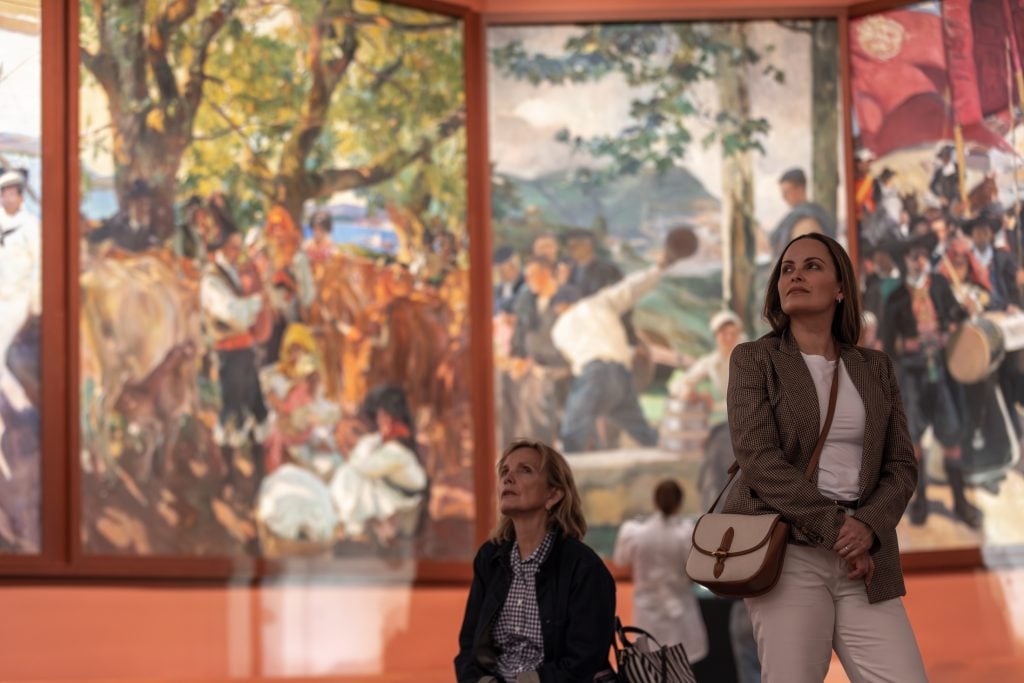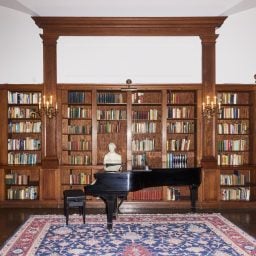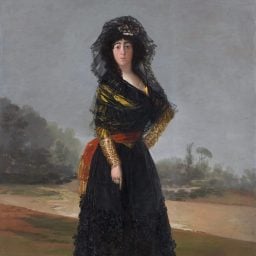For over five-and-a-half years, the galleries at New York’s Hispanic Society Museum and Library have been closed for renovations, its treasures of Spanish art on tour to institutions across the U.S. and Europe during long-overdue repairs to its historic Beaux Arts building.
Now, following $20 million in infrastructure improvements—phase one of a project overseen by design architects Selldorf Architects, executive architects Beyer Blinder Belle, and landscape architects Reed Hilderbrand—the Hispanic Society is ready to welcome back the public.
Memorial Day Weekend marked the reopening of the lower level of the museum’s dramatic Main Court and its famed Sorolla Room, built to house “Visions of Spain,” the monumental Joaquin Sorolla painting cycle installed in 1926. (Museum founder Archer Huntington commissioned it in 1911, after a blockbuster 1909 show of the artist’s work that drew 160,000 guests and forced the museum to stay open until 11 p.m.)
A little-known gem among New York City’s untold cultural riches, the Sorolla Room has sat empty for far too long, the vacant galleries only populated by the nearly 200 feet of paintings, each depicting vibrantly attired Spaniards carrying our various local traditions.
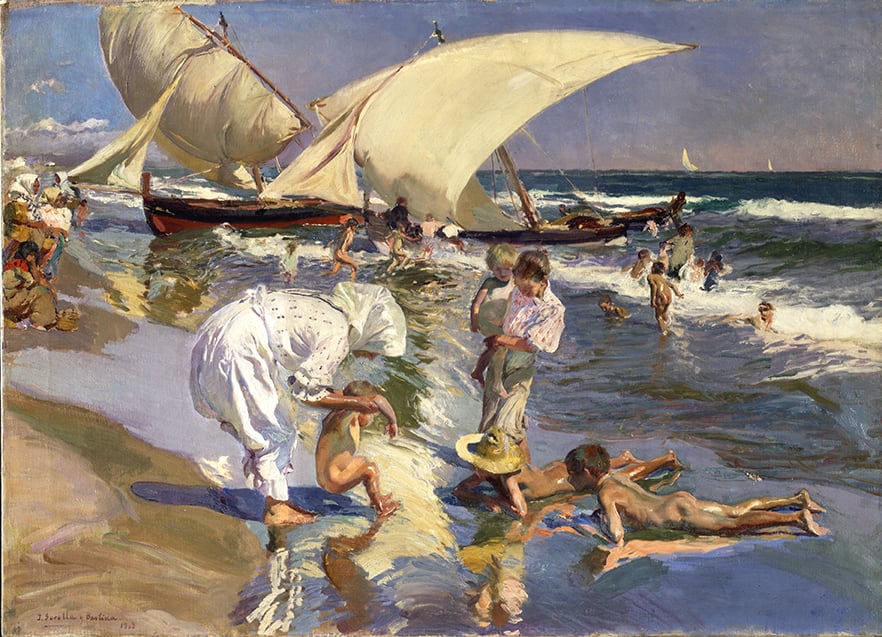
Joaquín Sorolla y Bastida, Beach of Valencia by Morning Light (1908). Collection of the Hispanic Society of America.
“The paintings are so crowded—we want to have as many people here as we can see on the canvases,” Guillaume Kientz, the museum’s CEO and director, told Artnet News.
Attendance figures have long lagged at the Washington Heights museum, which is part of the Audubon Terrace museum complex, a suite of eight Beaux Arts buildings, most of which were designed by Huntington’s architect cousin, Charles P. Huntington. By the time the museum closed in 2017, visitor numbers had fallen to just a few thousand a year—even it though boasts free admission.
But when “Visions of Spain” toured Spain from 2007 to 2010, the exhibition attracted 2 million visitors, the most of any museum show in the nation’s history. Looking ahead, the Hispanic Society hopes for 50,000 visitors a year for the first two years, and 100,000 to 150,000 within five years.

The newly renovated Main Court at the Hispanic Society Museum and Library, with an exhibition celebrating the centennials of Joaquín Sorolla and Jesús Rafael Soto. Photo by Alfonso Lozano, courtesy of the Hispanic Society Museum and Library.
It helps that “Visions of Spain” is only scratching the surface of the museum’s 750,000-piece collection. There are 175,000 photographs, thousands of decorative art objects, and nearly 7,000 paintings, with masterpieces by the likes of El Greco, Francisco Goya, Bartolomé Esteban Murillo, Francisco de Zurbarán, and Jusepe de Ribera, as well as no less than three paintings by Diego Velázquez.
While the museum was closed, some 200 of the key works went on tour, starting at the Museo del Prado in Madrid. Most of the collection returned home in April, following the final stop at the Royal Academy of Arts in London.
The traveling highlights will be back on view come the fall—but not necessarily in the same configuration as at the Hispanic Society of old.
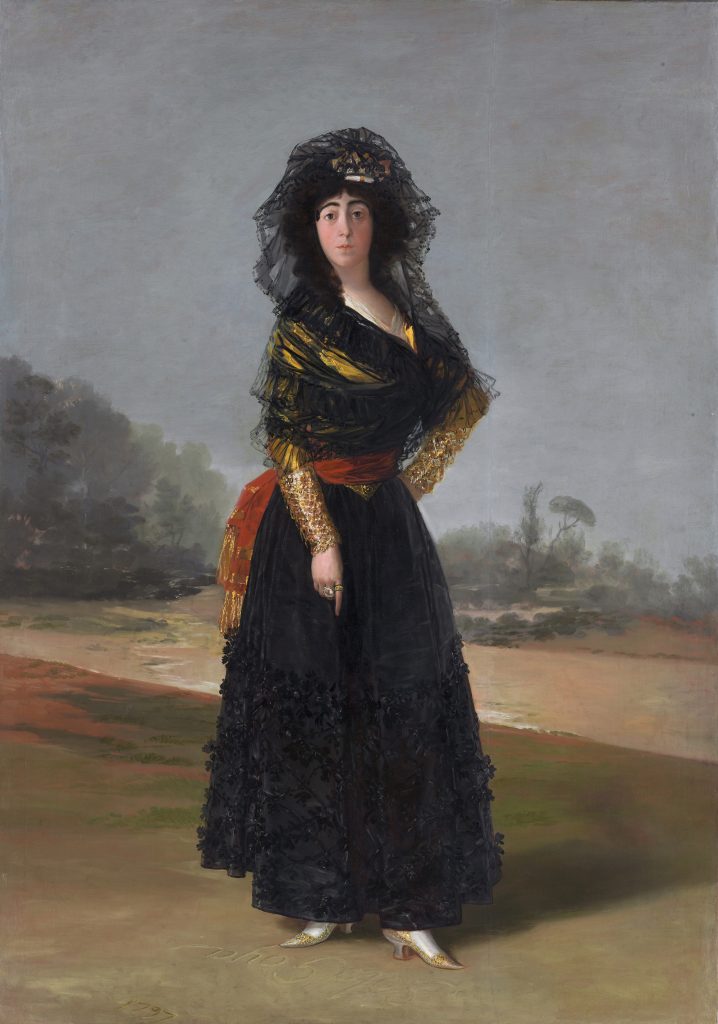
Francisco Goya, Duchess of Alba (1797). Collection of the Hispanic Society Museum and Library, New York.
“It used to be very static; come and see the same great masterpieces,” Kientz said. “Now, the idea is to change that, to add new narratives, new perspectives, and to use the collection to be able to tell more stories that were not told in the past.”
The heart of the museum has always been its Main Court, a double-level Spanish Renaissance-style terracotta arcade that was formerly packed to the gills with an impressive if slightly dusty array of paintings, ceramics, and 16th-century alabaster tomb sculptures. The space will feature new selections from the collection every six months moving forward.
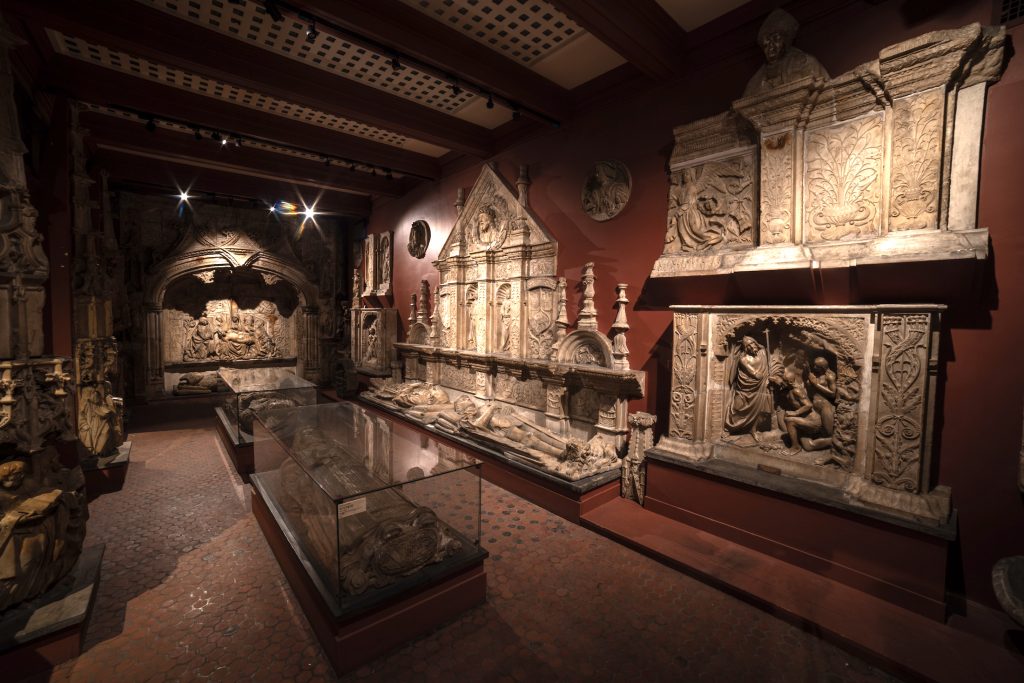
Alabaster sculptures from 16th-century Spanish tombs in the sculpture gallery in the Hispanic Society’s Main Court. Photo by Alfonso Lozano, courtesy of the Hispanic Society Museum and Library, New York.
“The walls used to be orange, like a lobster soup. It was nice, but the architecture, which is stunning, kind of got lost,” Kientz said. “Our lead architect, Annabelle Selldorf, proposed a color that is like limestone. It works very well. The architecture stands out; it’s much more readable.”
It’s also a clean backdrop for the inaugural display of the renovated galleries, which features a celebration of Sorolla, who died 100 years ago, as well as of Jesus Rafael Soto, the Venezuelan Op Art and kinetic artist who would have been 100 this year.
This influx of 20th-century art, on loan from Parisian gallery Perrotin, is indicative of the museum’s desire to expand its reach. Though the bulk of the collection stops with early Modernism, there are no official chronological limitations.
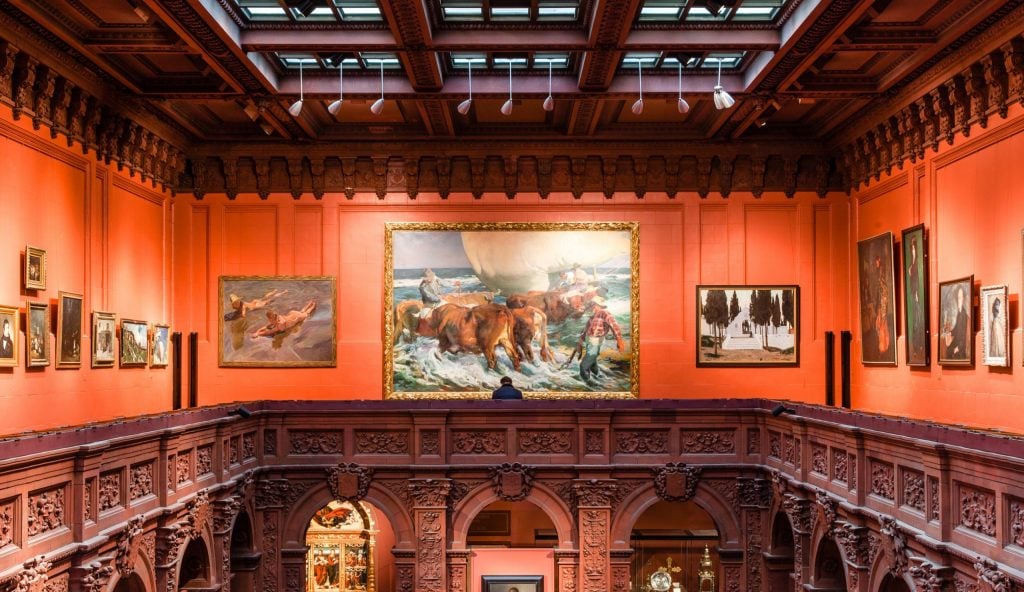
The Main Court at the Hispanic Society Museum and Library, New York, prior to renovations. Photo courtesy of the Hispanic Society Museum and Library, New York.
“We still receive and acquire contemporary art,” Kientz said, noting recent additions of work by Elena del Rivero following a public art installation on the museum terrace. “We definitely want to make living artists a more present part of our activity—as it was when the place opened in 1908, because Sorolla and many others in the collection were very much alive.”
The museum’s holdings are also broader than you might expect, encompassing not just Spain, but the broader Spanish and Portuguese speaking world, including Portugal, Latin American, and the Philippines, with substantial holdings of both Islamic art and Judaica.
When asked, Kientz denied that people had misconceptions about the Hispanic Society and its mission. “If they have misconceptions, that means they know who we are—which is a good start!” he said.
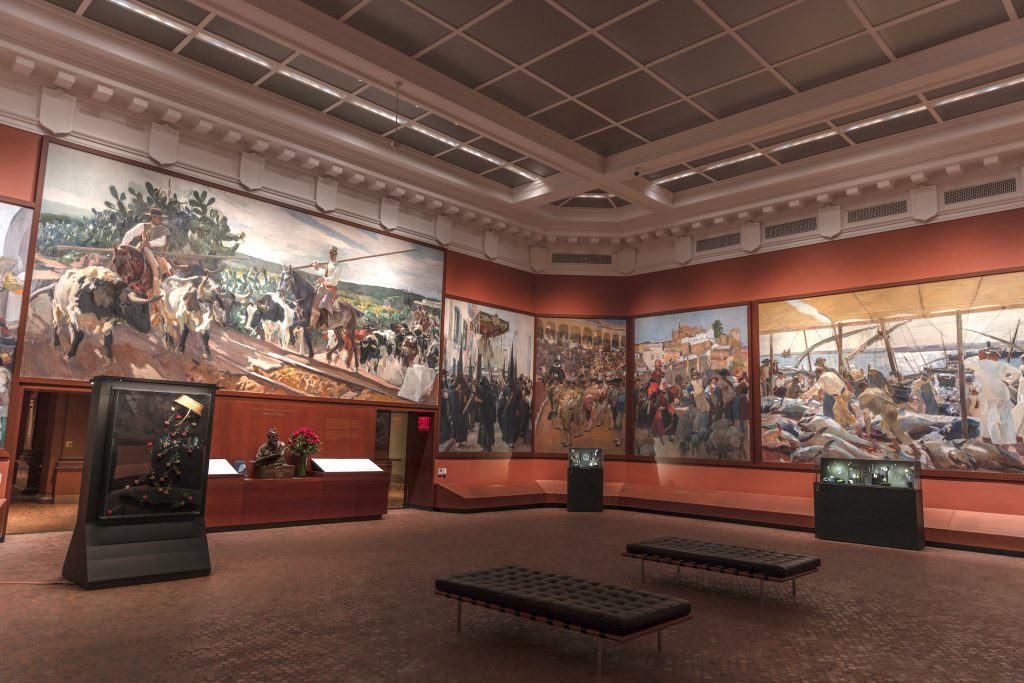
Joaquín Sorolla y Bastida “Visions of Spain” and “Jewels in a Gem: Luz Camino at the Hispanic Society” at the Hispanic Society Museum and Library. Photo by Alfonso Lozano, courtesy of the Hispanic Society Museum and Library.
The director also hopes to increase awareness of lesser-known facets of the museum’s collection, such as the fashion, textile, and jewel collections—which he himself had been unaware of before joining the institution in early 2021.
That’s why the Sorolla Room is now also home to “Jewels in a Gem: Luz Camino,” the museum’s first-ever jewelry show. It’s also the first U.S. exhibition for the Spanish high jeweler, whose stunning creations include wearable, gem-encrusted depictions of fruits, flowers, and birds.

“Jewels in a Gem: Luz Camino at the Hispanic Society” at the Hispanic Society Museum and Library. Photo by Alfonso Lozano, courtesy of the Hispanic Society Museum and Library.
“Luz Camino’s universe actually responds very much to the one of Sorolla, and some of her creations were actually inspired by Sorolla,” Kientz said.
Rounding out the first batch of exhibitions is “In Search of Juan de Pareja: From Arturo Schomburg to Jas Knight.” A companion show to “Juan de Pareja: Afro-Hispanic Painter” at the Metropolitan Museum of Art, it features a contemporaneous copy of Velázquez’s portrait of Juan de Pareja, and a new version by Brooklyn-based artist Jas Knight.
The reopening comes on the heels of a contentious two-month union strike, which ended on May 19 with the approval of a union contract. Workers had first organized in May 2021; the museum’s longterm closure became a major concern during negotiations, especially given the relative lack of cultural institutions in the neighborhood.

Union members from New York’s Hispanic Society Museum and Library picket outside the Upper East Side home of museum chairman Philippe de Montebello. Photo by Sarah Cascone.
Now, the Hispanic Society has installed banners on the facade advertising the institution for the first time, in the hope of attracting foot traffic, even as it attempts to draw visitors from downtown and further afield.
The museum’s relationship with the local community, which is largely Latino, has at times been fraught over the years. In 1993, then-director Theodore Beardsley controversially told ARTnews it wasn’t worth trying to engage the local community more because residents had a “low level of culture.”
Kientz has taken a different approach, partnering upon his arrival with the local Northern Manhattan Arts Alliance (NoMAA) on a mural project just inside the terrace gates inspired by the story of Latino immigration to the neighborhood.
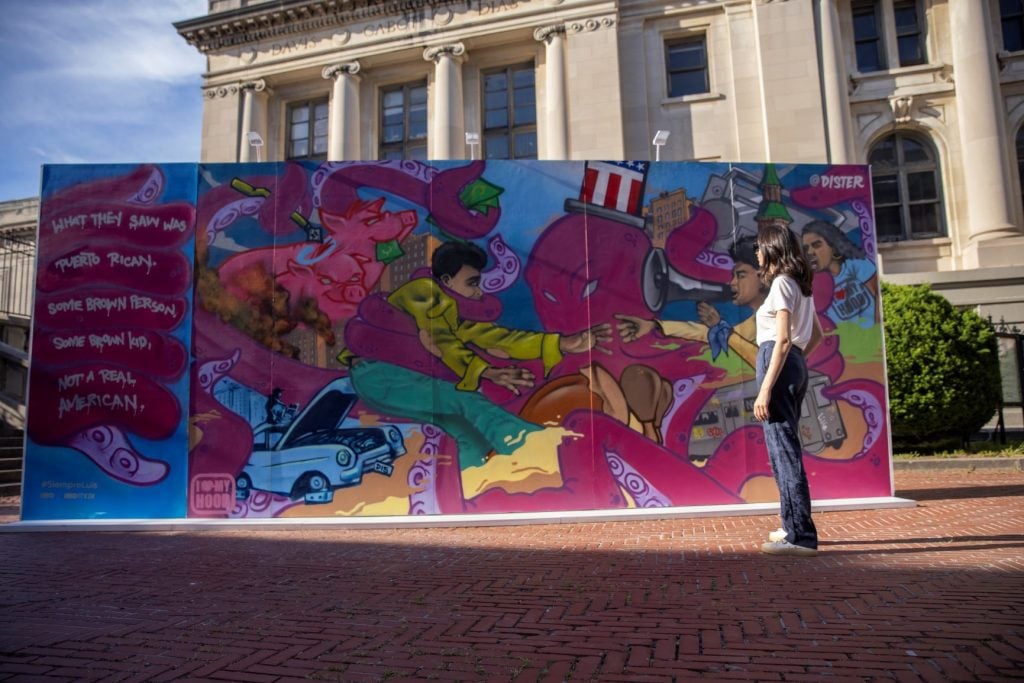
Artists Carlos Jesús Martínez Domínguez (FEEGZ), DISTER RONDON, Danny Peguero, and Carla Torres created this mural for “Latinx Diaspora: Stories from Upper Manhattan,” an exhibition on the Hispanic Society Museum and Library terrace hosted in 2021 in collaboration with the Northern Manhattan Arts Alliance (NoMAA) and Boricua College. Photo courtesy of the Hispanic Society Museum and Library, New York.
Next up, the two organizations will install Orange Cube (2014), an interactive public sculpture by Argentinian-born artist Marta Chilindron. It will be the first in a series of annual summer “Art on the Terrace” installations featuring work by residents of upper Manhattan, selected via an open call.
The terrace will also soon be home to a large-scale piece by Soto, titled Penetrable (1990), on loan from the Colección Patricia Phelps de Cisneros through 2026. A grid of jiggling yellow PVC tubes suspended from above, the sculpture is designed to be walked through, creating an ever-changing maze for viewers to experience.
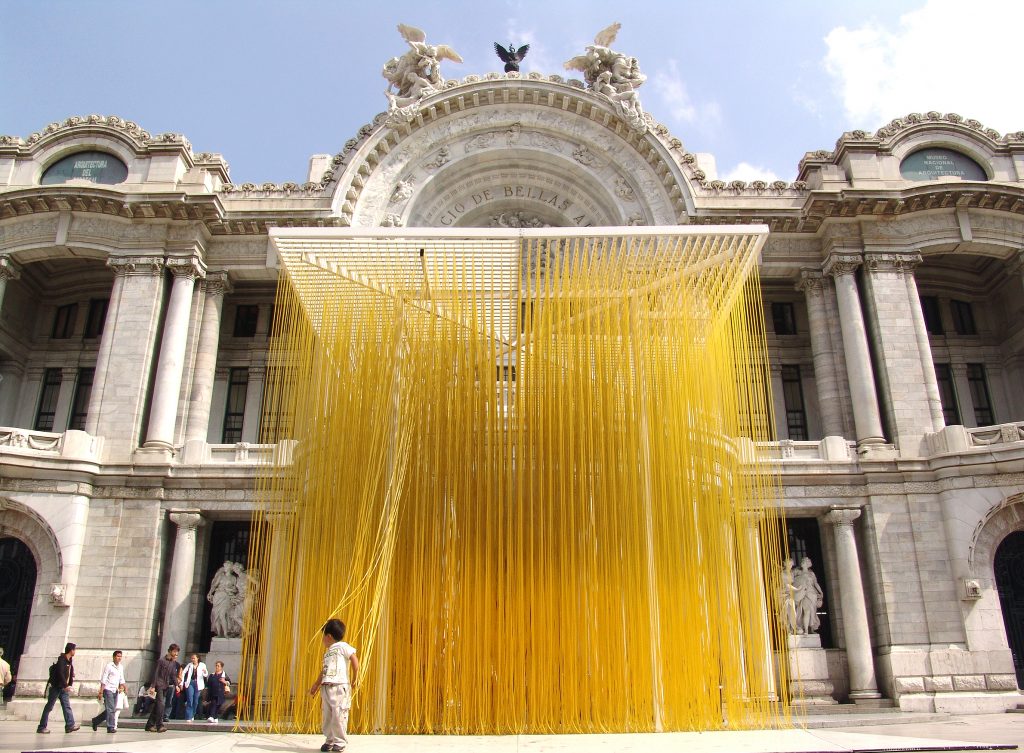
Jesús Rafael Soto, Penetrable (1990), at El Palacio de Bellas Artes, Mexico City, as part of the exhibition “Cruce de miradas: Visiones de América Latina.” Colección Patricia Phelps de Cisneros.
The Audubon Terrace site, on Broadway between West 155th and 156th Streets, is easily accessible from the 1 train, just one block away. But it might as well be Siberia for many New Yorkers—the New York Times once called it “the Arctic Circle of New York’s cultural globe”—and all of the Hispanic Society’s original neighbors except the American Academy of Arts and Letters are long gone.
Former tenants the American Geographical Society, the American Numismatic Society, and the Museum of the American Indian (now part of the Smithsonian) all moved downtown. In 2006, the Hispanic Society announced plans to follow suit. Instead, it tapped longtime former Met director Philippe de Montebello as chairman. He made it his mission to raise the museum’s profile—starting with long overdue renovations.
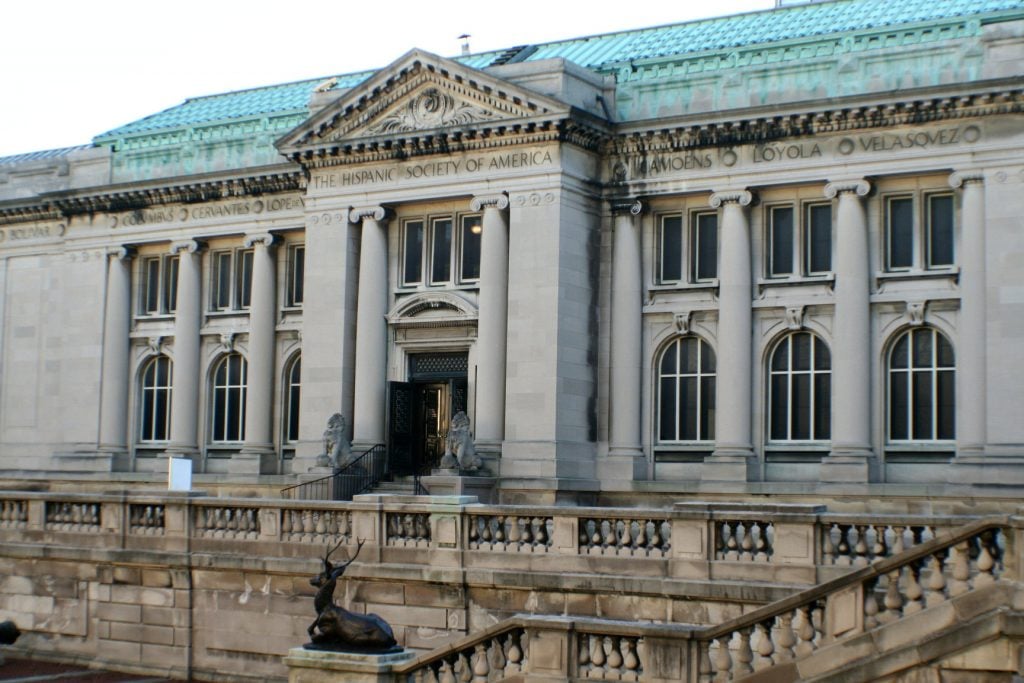
The Hispanic Society of America building on the Audubon Terrace in Washington Heights, New York. Photo by Asaavedra32, Creative Commons Attribution-Share Alike 3.0 Unported license.
The architecture itself was undeniably beautiful, but its structural underpinnings were in dire need of repairs. Prior to shuttering in 2017, the museum didn’t have air conditioning. Its copper roof needed to be replaced. Upgrades to the ventilation were also in order, and the building and its restroom facilities had to be made wheelchair accessible.
Those issues have now been addressed, but there’s still plenty of work to be done. The master plan also involves finally opening the East Building where the Museum of the American Indian had once resided—used as storage facilities since the Hispanic Society acquired it in 1996—to the public.
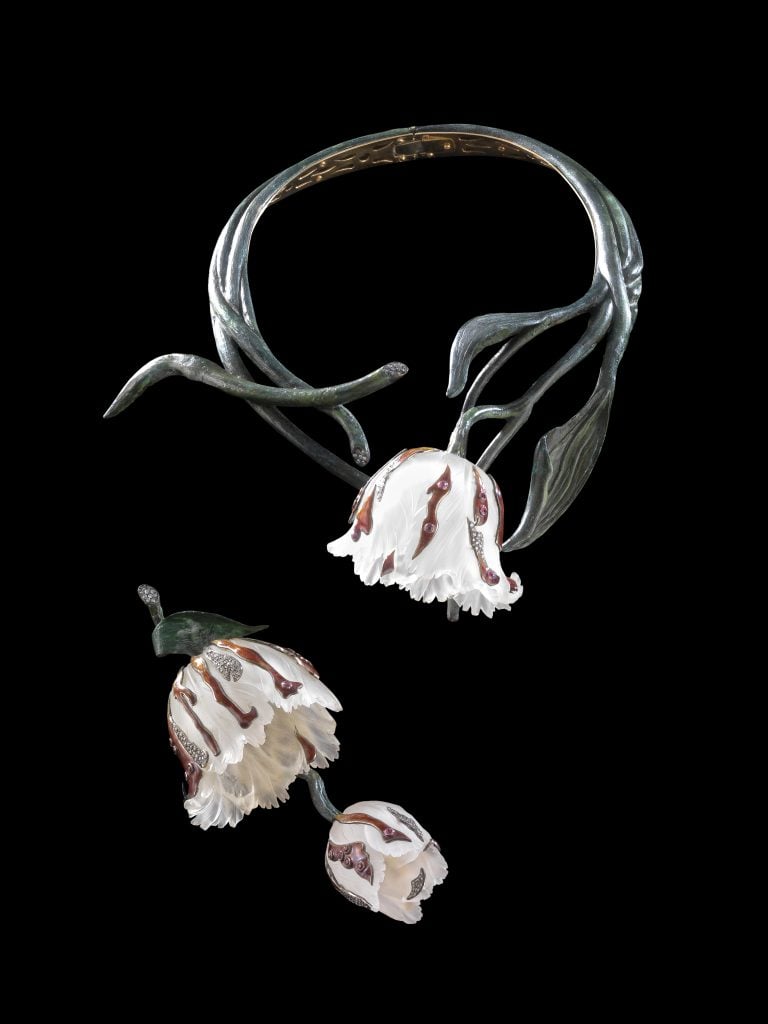
“Jewels in a Gem: Luz Camino, Tulip necklace and brooch (2006). Rock crystal, enamel, diamonds, bronze, gold, and silver. Collection of Ella Cisneros. Photo courtesy of the Hispanic Society Museum and Library.
When Kientz joined, the renovations had been going on for four years, with no end in sight. He made the executive decision to hit pause on work on the East Building, which will eventually become the museum’s main entrance, and to focus on finishing the Main Court and Sorolla Room.
The East Building’s ground floor space began hosting temporary exhibitions in June 2021, and has since held four shows. But now the entire building is closed once again, as the museum prepares to begin further renovations in 2024. It is two-thirds of the way to its $50 million fundraising goal, which will help build a visitor center, an education center, and a conservation lab, in addition to gallery space for special exhibitions.
The Hispanic Society Museum and Library reopened May 25, 2023, at Audubon Terrace, 613 West 155th Street, New York, New York. “In Search of Juan de Pareja: From Arturo Schomburg to Jas Knight” is on view May 25–July 16, 2023. “Jewels in a Gem: Luz Camino at the Hispanic Society” is on view May 25–September 3, 2023. “Anatomy of a Fresco: Drawings of José Clemente Orozco from the Wornick Collection” will be on view June 22–October 1, 2023. “Marta Chilindron: Orange Cube” will be on view June 22–October 2023. “Jesús Rafael Soto’s: Penetrable” will be on view June 22, 2023–2026.
More Trending Stories:
Is TikTok Trying to Cancel Salvador Dalí? Why Art Historians on the Platform Are Denouncing the ‘Problematic’ Surrealist Icon
Why Andy Warhol’s ‘Prince’ Is Actually Bad, and the Warhol Foundation v. Goldsmith Decision Is Actually Good
The Art Angle Podcast: James Murdoch on His Vision for Art Basel and the Future of Culture
Art Advisor Maria Vogel Hosts Art-Inspired Dinner Parties, Cherishes Handwritten Notes, and Keeps an Eye Out for Overlooked Women Artists
A Palatial Home by Frank Lloyd Wright—With a Circular Design Echoing His Guggenheim Museum—Has Hit the Market for $8 Million
Scarlett Johansson, Bryan Cranston, and Other ‘Asteroid City’ Stars Respond to the Viral Wes Anderson TikTok Trend With Their Own Parody
A British Couple Actually Paid Nearly $250,000 to Remove a Banksy Mural From Their Building Due to the ‘Extremely Stressful’ Upkeep
Archaeologists in Hungary Have Uncovered the Remains of an Ancient Roman Doctor Alongside His Surgical Toolkit
The World’s First A.I.-Generated Statue, Cobbling Together the Styles of Five Celebrated Sculptors, Has Landed in a Swedish Museum
Meet the Young Collectors Calling the Shots at the Guggenheim, a Highly Placed Art Worlder’s Anti-Woke Tweets, and More Art World Gossip
An Extraordinary Wristwatch Belonging to the Last Emperor of China Just Sold for $6.2 Million, Setting Multiple Auction Records
A Sculpture Depicting King Tut as a Black Man Is Sparking International Outrage
Archaeologists Have Found a 3,000-Year-Old Bakery in Armenia, After Realizing a Layer of Ash Was Actually Wheat Flour
Why the Supreme Court’s Decision in the Andy Warhol Copyright Case Shows the Dangers of a Sympathy Vote
An Exhibition of Taylor Swift’s Stuff Has Just Opened at the Museum of Arts and Design. Here Are 5 Must-See Displays, Swifties
